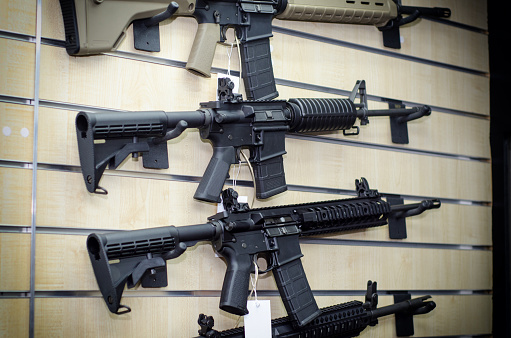The Covid-19 pandemic dominated the headlines, but gun violence remained a prevalent killer in 2020.
In fact, twenty thousand Americans died from gun violence last year, the highest number in at least two decades, according to the CDC. An additional twenty-four thousand Americans committed suicide with a gun.
The Washington Post provides important context:
Shooting deaths in 2020 outpaced the next-highest recent year, 2017, by more than 3,600. The rise resembles other alarming trends: Last year, the United States saw the highest one-year increase in homicides since it began keeping records, with the country’s largest cities suffering a 30 percent spike. Gunshot injuries also rose dramatically, to nearly 40,000, over 8,000 more than in 2017.
In January, Sonali Rajan, an associate professor in the department of Health and Behavioral Studies at Columbia University, told NPR that the Covid-19 pandemic is partly to blame: “…public resources simply were diverted due to the pandemic – so the work of violence interrupters, social programs and support services not being as readily available.”
According to the National Shooting Sports Foundation, 8.4 million people bought a gun for the first time in 2020 and twenty-one million background checks were conducted for the sale of a firearm. Both numbers are record-setting.
In March, there have been two high-profile mass shootings – one in Atlanta, GA and one in Boulder, CO. Eighteen people were killed.
In 2020, however, mass shooting were historically low. According to The Guardian:
There were only two public shootings in 2020 that primarily targeted strangers, were not related to other crimes and killed at least four victims – one standard definition researchers use to classify “mass shootings” – according to two databases that track this kind of gun violence. That’s the lowest annual count of high-profile mass shootings in America in nearly a quarter-century, according to Jillian Peterson, the founder of the Violence Project, which tracks these mass shootings going back to 1966.
Yet, despite the dip in mass shootings, there were 4,000 more gun murders in 2020 than in 2019, according to The Gun Violence Archive.
The Washington Post highlights that minority populations are disproportionately impacted by gun violence:
An analysis of data from the Centers for Disease Control and Prevention found Black males between the ages of 15 and 34 accounted for 37 percent of gun homicides, even though they made up 2 percent of the U.S. population — a rate 20 times that of White males of the same age.
Earlier this week, President Biden called on Congress to create new gun control laws. “This is not and should not be a partisan issue. This is an American issue,” Biden said. “It will save lives, American lives, and we have to act.”



